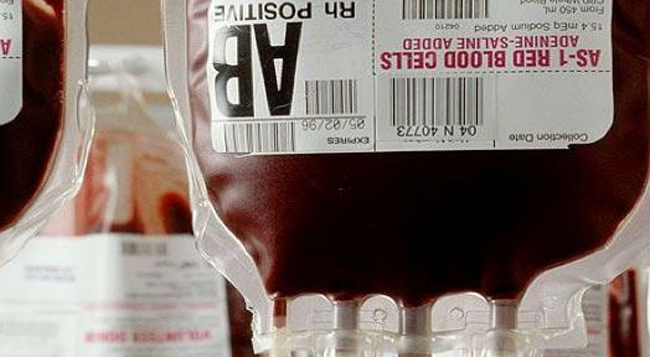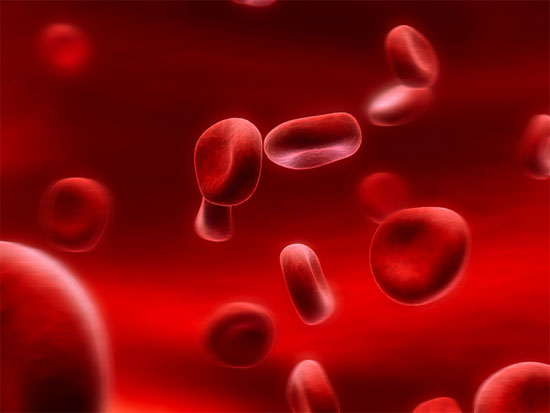Learn some dangerous blood diseases
Blood disease is a dangerous disease of modern times. The incidence of disease is increasing but in fact many people still do not know and care about this dangerous disease.

1. Congenital hemolytic disease
According to information from the National Institute of Hematology and Blood Transfusion, Thalassemia is a hemolytic anemia, a lifelong disease, belongs to a group of genetic diseases - congenital, found in both men and women. . The disease has two prominent manifestations: anemia and iron overload in the body.
This anemia is prolonged, progressively heavier, so the young skin is pale, pale, tired children are less active, slow to develop, and if it is prolonged, the liver is enlarged, deforming the whole face. One problem is that this anemia does not respond to drug treatment, but must be treated with blood transfusions, to ensure that the hemoglobin level is always above 100g / liter, so that the child will have can develop normally and the liver is not enlarged.
Congenital bleeding is a very dangerous disease. Currently, there are thousands of patients, especially children who have been in very difficult and pitiful situations because they are not only sick but also inferior to their form due to the severe sequelae of the disease.
If one of the parents has a carrier of Thalassemia , their child will be half-normal, half healthy, but carry the Thalassemia gene.

Photo: photo-dictionary.com
In Vietnam, an estimated 5.3 million people carry the disease, more than 20,000 patients need treatment, every year more than 2,000 babies are born with diseases requiring treatment. Patients are available in all provinces / cities across the country, especially in mountainous provinces and areas where ethnic minorities live.
Hemophilia disease
A genetic coagulopathy caused by a lack of coagulation factors 8 and 9, making the patient very bleeding and unable to hold. Coagulation depends on the interaction of many components in the blood. Some of them are called coagulation factors. If one of these clotting factors is not present or is missing, prolonged bleeding may occur. A Hemophilia patient has fewer clotting factors than usual.
In general, the more severe Hemophilia patients are, the sooner they show symptoms. Symptoms usually appear when the child begins to practice standing and stomping. After falls or bumps when going to practice often appear subcutaneous bleeding or bleeding lips and tongue. In children 2-3 years old, bleeding in joint muscles is common with pain and swelling, decreased movement of legs and hands.
The disease can cause bleeding anywhere on the body with signs such as bruising under the skin but the most common is bleeding at the joints, the more painful and swollen muscles may be brain hemorrhage leading to death.
In Vietnam, it is estimated that about 6,000 people carry this dangerous disease, but there are very few people detected, diagnosed and treated (30%).

Anemia
This is a decrease in the number of red blood cells or hemoglobin levels below normal levels. Anemia makes oxygen transport in the body worse than normal. People with anemia will lack oxygen. People with anemia feel tired all the time, their skin is pale, palpitations, shortness of breath.
Women are more prone to anemia than men, because they lose blood due to menstruation every month.Iron deficiency anemia is also common in women.
In adults, iron deficiency anemia is often caused by long-term blood loss. This anemia can be caused by menstruation, or due to low blood loss but prolonged (may be difficult to detect) such as hookworm disease, gastric ulcer, duodenal cancer. Anemia may also be due to gastrointestinal hemorrhage when taking some common pain medications such as aspirin, diclofenac and ibuprofen (ADVIL, MOTRIN).
In children, iron deficiency anemia is often caused by an iron-deficient diet. In addition, other causes of anemia are: lack of vitamin B12, lack of folic acid, rupture of red blood cells, bone marrow emptying .
Treatment of anemia, first, is to treat the cause of anemia. For example, anemia due to blood loss from stomach ulcers. Treatment is to treat ulcers. Also, surgery is often needed to remove colon cancer, using a lottery to treat hookworms. These are the causes of chronic anemia . Sometimes iron supplementation is also necessary to treat iron deficiency anemia. Sometimes severe anemia requires blood transfusions. Injections of Vitamin B12 are also needed for patients with large red cell anemia or anemia due to other causes of B12 deficiency. In some patients with bone marrow disease (or marrow damage due to chemotherapy) or patients with kidney failure, epoetin alfa (Procrit, Epogen) can be used to stimulate red blood cells to produce red blood cells.
Polycythemia

As one of the pathologies of malignant marrow proliferation, characterized by the proliferation of all 3 red blood cells, white blood cells and platelets in the bone marrow, leading to an increase in the number of cells This in the peripheral blood, especially the number of red blood cells.
Common manifestations of the disease are headache, dizziness, dizziness, tinnitus, blurred vision, nosebleeds, gastrointestinal bleeding, natural bruising on the skin, itching, sweating, thinning, face and red palms, bone pain, hepatosplenomegaly and embolism manifestations such as recurrent pain, cerebral infarction.
There are 2 treatments for polycythemia: blood extract and medication.
- 5 dangerous diseases that attack humanity due to climate change
- 5 types of dangerous diseases can be detected by eye examination
- Dangerous diseases Vietnamese people often encounter
- The chip detects many diseases in just one drop of blood
- An additional gene therapy for blood cancer is licensed in the United States
- What blood tests can you know about?
- 6 warning signs of dangerous blood clots
- In the plethora of deadly epidemics, what is the most dangerous virus in history?
- 5 common diseases that people need to know
- 11 reasons mosquitoes are the most dangerous species on Earth
- Early signs of blood cancer
- Chimpanzees are easy to transmit dangerous diseases
 Green tea cleans teeth better than mouthwash?
Green tea cleans teeth better than mouthwash? Death kiss: This is why you should not let anyone kiss your baby's lips
Death kiss: This is why you should not let anyone kiss your baby's lips What is salmonellosis?
What is salmonellosis? Caution should be exercised when using aloe vera through eating and drinking
Caution should be exercised when using aloe vera through eating and drinking